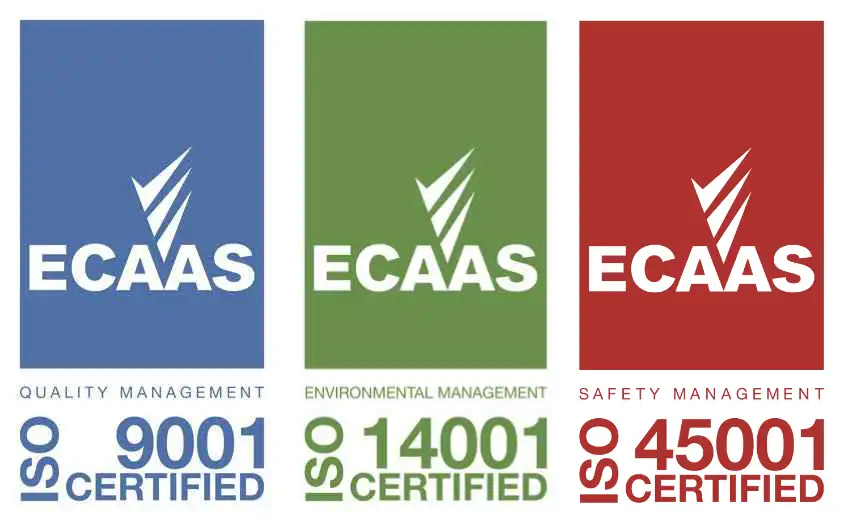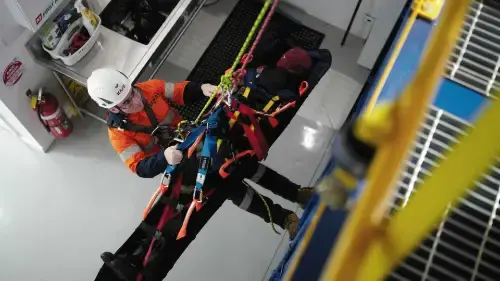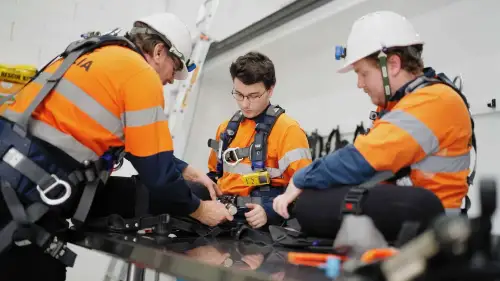Working at Heights Training in Newcastle, NSW
Work Safely at Heights Refresher - 1/2 Day
Program for those who have already completed their work at heights training and need to be refreshed.
Work Safely at Heights - 1 Day
This is a program for those that are required to safely work at heights or depths including heights rescue.
Vertical Rescue Training - 4 days
A unit for vertical rescue operations by rescue teams, typically performed by emergency services, emergency response teams and/or other operational teams. Tasks include performing rope rescue to extract a co-worker who is injured or suspended.
Available Training
What our customers say
Our Certifications









What is a covered in our working at heights training?
 This is nationally recognised training with a Statement of Attainment Certificate issued on satisfactory completion of all assessments.
This is nationally recognised training with a Statement of Attainment Certificate issued on satisfactory completion of all assessments.
Our basic working at heights safety training is for operators who are required to have both practical skills and an understanding of theory needed to work at height on a broad range of structures in different environments and industries.
The course will give them the necessary theory, practical skills and knowledge to work safely in a range of situations, using various types of fall protection equipment.
The basic course also covers emergency response and heights rescue using a variety of techniques for varying situations.
The Vertical Rescue training on the other hand, covers preparing and responding to any emergency requiring a vertical rescue. Appropriate assessment and control of risks and the skills and knowledge needed to perform a vertical rescue.

This training is essential for anybody who has to work at heights as part of their job including people working in the Construction, Manufacturing, Industry, Mining, Shipping, Defence, Rural and Government sectors. Basically people in any workplace that are required to work from heights.
Working at heights is always a high risk activity and remains a leading cause of death and serious injury in Australian workplaces. In fact, between 1 January 2003 and 31 December 2015, a total of 359 Australian workers lost their lives due to falls from height. That's 11% of all workers killed during that period.
This does not just relate to people working on towers, half of these deaths were from falls of 3 meters or less and 54 of these people fell from ladders.
Working from heights (working at heights) training is required by law. It saves lives and minimises the chance of litigation.
Working at Heights Training FAQs
What is considered working at heights in Australia?
In Australia, working at heights means working in any place where a person could fall a distance liable to cause injury. This is generally defined as two metres or more, but WHS laws require fall protection for any height where a risk of injury exists.
Is working at heights training mandatory in Australia?
Yes. Under the Model Work Health and Safety Regulations, workers must be trained and deemed competent before undertaking any task involving a fall risk. Employers are legally required to provide this training.
What does working at heights training cover?
Training typically includes:
- Risk assessment and hazard identification
- Safe work procedures for working at height
- Fall arrest systems and restraint systems
- Use of harnesses, lanyards, anchor points, and ladders
- Emergency procedures and rescue planning
What qualification do you need to work at heights?
The standard nationally recognised unit of competency is:
- RIIWHS204E – Work safely at heights
This certification is often required on construction sites, in mining, utilities, and maintenance work.
How long is working at heights training valid in Australia?
While the Statement of Attainment does not technically expire, most industries recommend refresher training every 2 years to ensure continued competence and legal compliance.
How long does working at heights training take?
Most working at heights training courses take 1 full day to complete, including both theoretical and hands-on practical assessments.
How much does working at heights training cost in Australia?
Prices generally range from $200 to $350, depending on the training provider, location, and whether group or on-site training is included.
Who needs working at heights training?
This training is essential for:
- Construction workers
- Roofers, electricians, plumbers
- Scaffolding and rigging teams
- Maintenance and cleaning crews
- Mining and utilities workers
- Anyone using ladders, scaffolds, or EWP (elevated work platforms)
What are the employer's responsibilities for working at heights?
Employers must:
- Provide a safe working environment
- Eliminate or minimise fall risks
- Supply fall protection systems and PPE
- Ensure workers are trained and supervised
- Develop emergency response plans
What equipment is used for working at heights?
Common equipment includes:
- Harnesses and lanyards
- Fall arrest and restraint systems
- Anchor points
- Scaffolding and edge protection
- Elevated work platforms (EWPs)
- Portable ladders and step platforms
Zokal Working at Heights Training FAQs
Why choose Zokal for working at heights training?
Zokal offers industry-leading working at heights training with state-of-the-art simulation towers, cutting-edge fall protection systems, and purpose-built training environments. Every session is hands-on and designed to reflect real-world high-risk work conditions.
Where does Zokal deliver working at heights training?
Zokal’s purpose-built training centre in Sandgate, NSW provides a controlled yet realistic environment for high-risk training. On-site training at your facility is also available for group bookings and customised solutions.
Is Zokal’s working at heights training nationally recognised?
Yes. All Zokal training courses are nationally accredited, and successful participants receive a Statement of Attainment for RIIWHS204E – Work safely at heights, recognised throughout Australia.
How qualified are Zokal’s trainers?
Zokal’s trainers are highly experienced industry professionals, many of whom have backgrounds in high-risk sectors like mining, construction, and rescue. They focus not only on compliance, but on equipping participants with life-saving skills that go beyond theory.
What kind of equipment is used during training at Zokal?
All training is conducted using new, immaculately maintained fall protection gear, including harnesses, inertia reels, lanyards, anchor points, ladders, and elevated platforms. Zokal’s gear reflects current industry standards and worksite conditions.
Can Zokal customise working at heights training for specific industries?
Yes. Zokal can tailor training to suit the unique risks and requirements of various industries, including mining, construction, utilities, maintenance, and emergency services. Custom scenarios, equipment familiarisation, and rescue drills can all be incorporated.
How do I book working at heights training with Zokal?
You can book through the calendar or contact our training team on: (02) 4960 9611 for group bookings and customised onsite programs. We also assist with ensuring your training aligns with your company’s WHS obligations.







